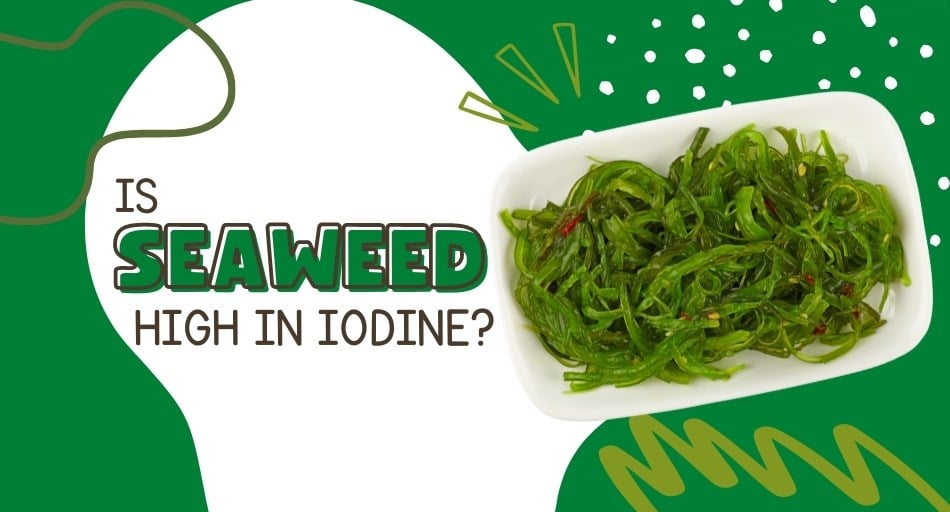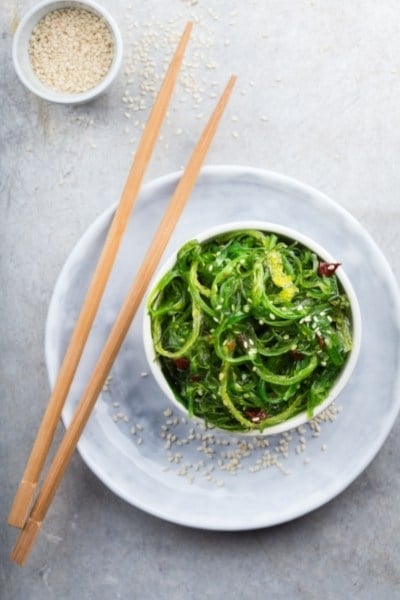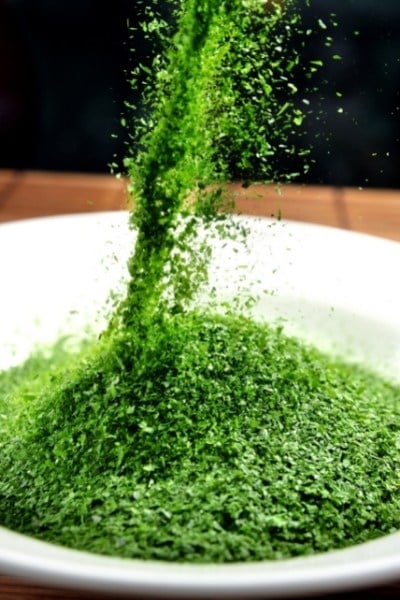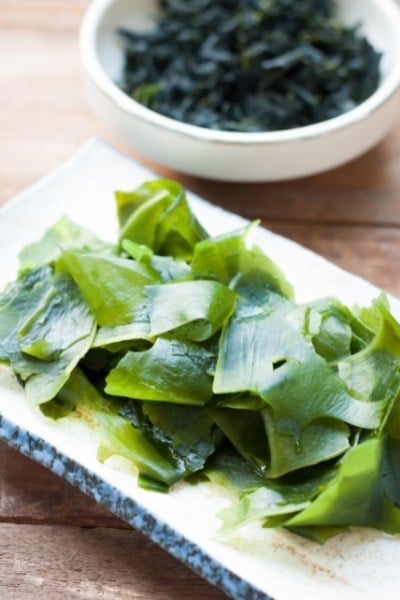There are three main groups of seaweeds – brown, green, and red – each of which contains different species.

Consuming seaweeds can be of great importance to your body. They’re a source of many minerals and vitamins, including iron, and calcium.
Seaweeds can also help to detoxify your body, and some research suggests that they may even have cancer-preventing properties.
However, is seaweed high in iodine?
Table of Contents
- Is seaweed high in iodine?
- How much iodine is in seaweed?
- What are the types of seaweeds?
- What seaweed is high in iodine?
- What are the health benefits of seaweed?
- Can you take in too much iodine from seaweed?
- What seaweed does not have iodine?
- Is it OK to eat seaweed every day?
- Why is iodine important?
- How much iodine should one consume per day?
- What are the side effects of iodine?
- Conclusion
Is seaweed high in iodine?
Seaweed is high in iodine because it contains high levels of iodine in its tissues. The amount of iodine in seaweed can vary depending on the type of seaweed and where it’s grown. For example, kelp from contaminated waters contains the highest levels of iodine.
Iodine is a necessary mineral for the production of thyroid hormones, which regulate metabolism. Too little iodine can lead to goiter, while too much iodine can be toxic.

How much iodine is in seaweed?
Seaweed has high iodine content of varying levels depending on the type of seaweed and where it’s grown. Seaweed in general has iodine concentrations ranging from 16 mcg/g to 2,984 mcg/g of dried weight. That's a remarkable difference between them.
What are the types of seaweeds?
There are more than 145 types of seaweeds used for cooking and eating. Some of them include:
1. Kombu - a type of kelp that’s dark in color and has a strong umami flavor
2. Nori - a type of red algae that are used to make sushi rolls
3. Wakame - a type of brown algae that has a sweet flavor
4. Dulse - a type of red algae that’s chewy and has a salty flavor
5. Arame - a type of brown algae that has a mild flavor
6. Hijiki - a type of brown algae that has a strong flavor
What seaweed is high in iodine?

The highest iodine content in seaweed is found in two species of brown algae: kelp and bladderwrack. Kelp can have an iodine concentration of up to 2,984 mcg/g, while bladderwrack has an iodine concentration of 600 mcg/g.
What are the health benefits of seaweed?
The health benefit of seaweed include:
1. It’s a good source of iodine which is necessary for the production of thyroid hormones.
2. Seaweed can help to prevent goiter, a condition caused by iodine deficiency.
3. It’s a good source of fiber which can help to promote regularity and prevent constipation.
4. It’s a good source of vitamins and minerals, including vitamin A, vitamin C, vitamin B12, iron, and calcium.
5. Seaweed contains compounds that can help protect against cancer.
6. It can help to lower blood pressure and cholesterol levels.
7. Helps to improve joint health.
8. Helps to boost the immune system.
9. Helps to detoxify the body.
10. Promotes weight loss.
11. Seaweed can help to improve skin health.
Can you take in too much iodine from seaweed?
Consuming large amounts of iodine from seaweed isn’t common and is not likely to cause iodine toxicity. Even if you take too much iodine, the body will excrete the excess iodine in urine.

However, if you have a seafood allergy, you may be at risk for an allergic reaction to seaweed.
Iodine toxicity is more likely to occur from taking iodine supplements or using certain medications. Symptoms of iodine toxicity include; nausea, vomiting, diarrhea, abdominal pain, headache, fever, joint pain, and rash.
What seaweed does not have iodine?
Green seaweeds are the type of seaweeds commonly low in iodine. Green seaweeds such as Ulva and Enteromorpha, do not have iodine.
These seaweeds are often used in salads or as a garnish. Sargassum, a type of brown algae, also doesn’t have iodine. This seaweed is often used in soups or as a garnish.
Caulerpa, a type of green algae, doesn’t have iodine. This seaweed is often used in sushi rolls or as a garn
Is it OK to eat seaweed every day?
Yes, it is OK to eat seaweed every day. Seaweed is a healthy food that can provide many health benefits. However, it’s important to eat a variety of foods and not to overdo it on anyone's food.
If you have a seafood allergy, you should avoid eating seaweed. If you are taking iodine supplements or certain medications, speak to your doctor before eating seaweed as you may be at risk for iodine toxicity.

Why is iodine important?
Iodine is an essential trace element that’s necessary for the production of thyroid hormones. These hormones are important for regulating metabolism, growth, and development.
Iodine deficiency can lead to goiter, a condition in which the thyroid gland enlarges. Iodine deficiency is also the leading cause of mental retardation. Seaweed is a good source of iodine and can help to prevent these conditions.
How much iodine should one consume per day?
The recommended daily intake of iodine is 140 mcg for adults. However, pregnant and breastfeeding women need more iodine, at about 150 mcg per day.
Seaweed is a good source of iodine and can help you to meet your daily needs. So, eating just a small amount of seaweed each day can help you to reach your iodine needs.
What are the side effects of iodine?
When iodine is overconsumed, the side effects are usually gastrointestinal and include; nausea, vomiting, diarrhea, and abdominal pain.
In some cases, iodine toxicity can lead to more serious side effects such as; headache, fever, joint pain, and rash. If you have a seafood allergy, you should avoid eating seaweed.
If you’re taking iodine supplements or certain medications, speak to your doctor before eating seaweed as you may be at risk for iodine toxicity.
Conclusion
In conclusion, seaweed contains high levels of iodine, which is essential for human health. So it's important to include iodine in your diet by including seaweed as part of your regular diet.
However, too much iodine can be harmful, so it’s important to consult with a healthcare provider before consuming seaweed or iodine-rich foods.
Sources: Science Direct, WebMD
